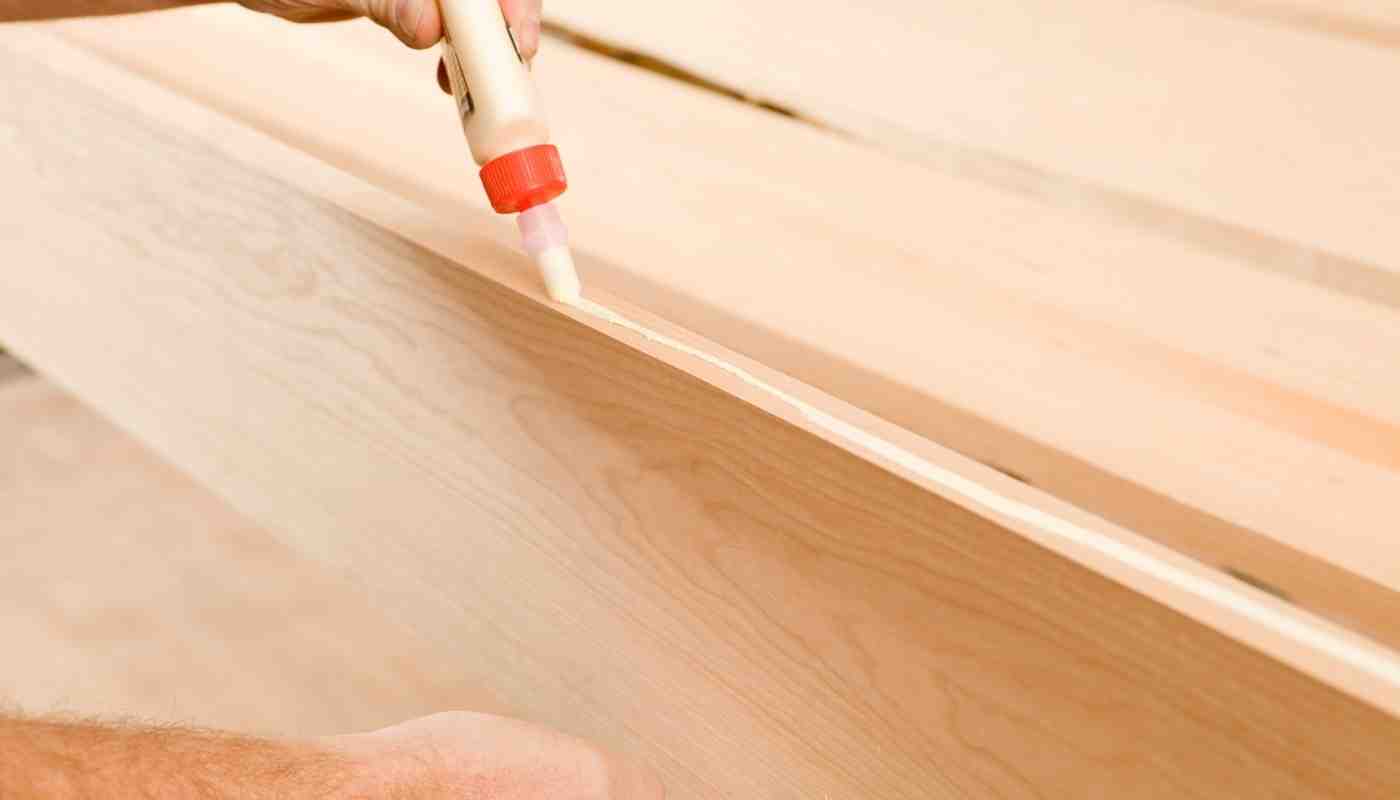How to Get Wood Glue Off Wood (16 EASY Methods to Try)
Everyone has used too much wood glue at some point! It’s inevitable. It comes in handy to secure pieces of wood together, but there always seems to be too much at the end.
The dried wood glue stains can be a pain to handle. How can you get wood glue off of wood? Is it possible?
In this post, I’ll explore how to get wood glue off wood, how to remove wet wood glue, and much more. Let’s get started!
16 Best Ways to Remove Glue from Wood
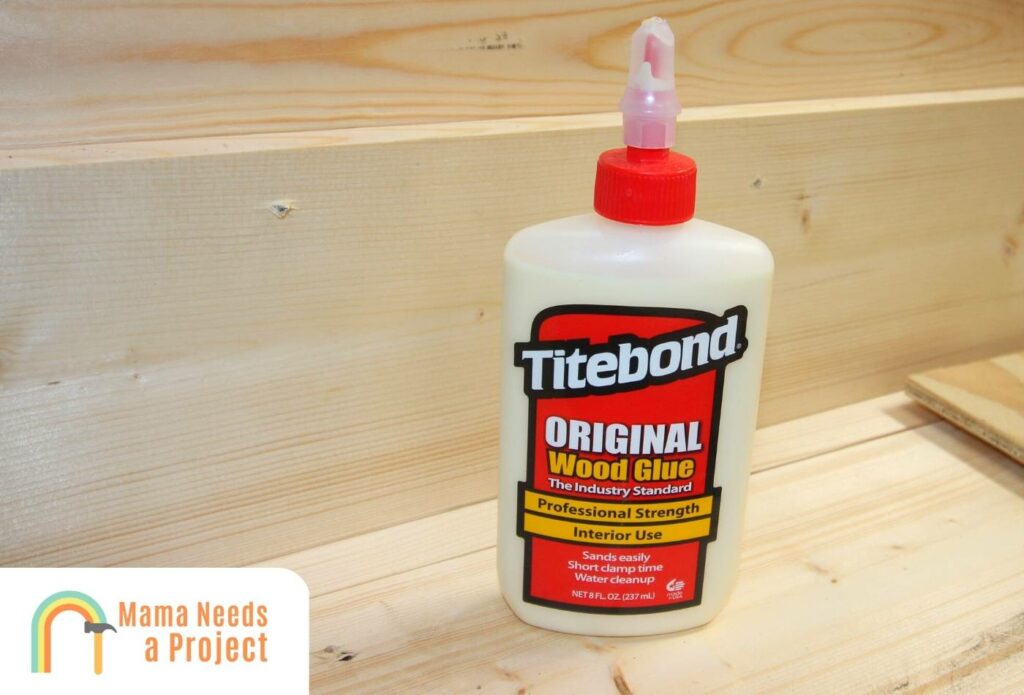
There are many methods when removing dried wood glue and most of the options for getting rid of glue stains involve materials you probably already have right inside your house.
Here are the best ways to remove dried wood glue from wood:
- Sand Off Dried Wood Glue
- Utilize a Heat Gun
- Try Diluted Vinegar
- Rub With Nail Polish Remover
- Make Do With a Spatula
- Get a Glue Remover
- Add Baking Soda
- Attempt Scraping
- Utilize Cooking Oil
- Mix Soapy Water
- Add Mayonnaise
- Try Brake Cleaner
- Use Ammonia
- Attempt Methylated Spirits
- Wipe With a Wet Cloth
- Take Advantage of Citrus Fruits
With so many options, if one doesn’t work – you can always try another method.
Related Reading:
- How Long Does Wood Glue Take to Dry?
- 9 Best Ways to Remove Staples From Wood
- How to Remove Acrylic Paint From Wood
- Does Super Glue Work on Wood?
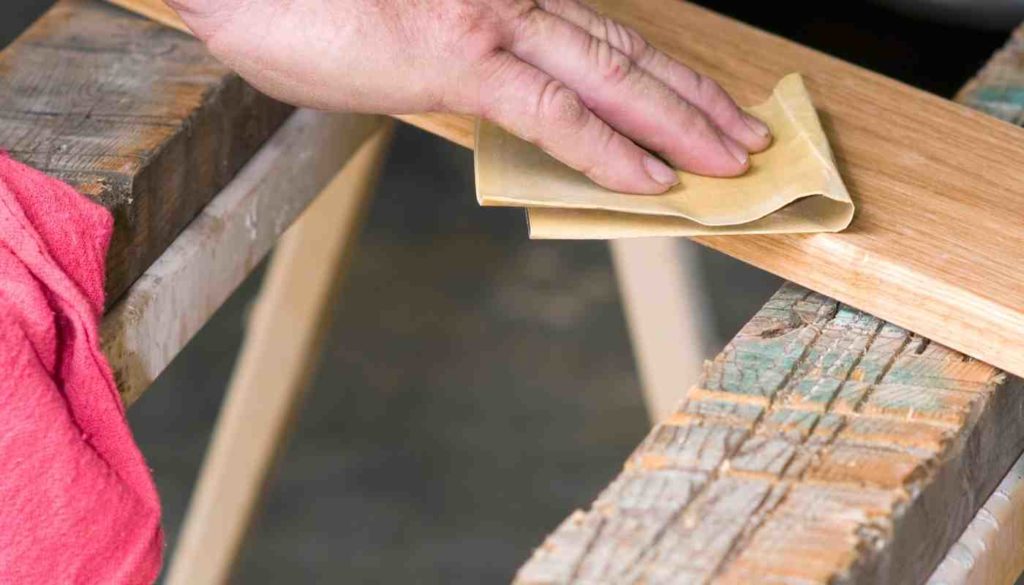
Sand Off Dried Wood Glue
Sanding dried glue is a classic method to remove wood glue from wood.
Sandpaper is a popular material that many woodworkers and homeowners likely have at their disposal. If you don’t have any, you can pick it up at your local hardware store.
If you are working to remove the glue off unfinished wood, sandpaper can be your best friend. Sanding can get a bad rap for how abrasive it is, but it’s an excellent way to handle wood surfaces without spending hours trying to remove wood glue.
To sand away stubborn wood glue stains, you should:
- Select the proper grit sandpaper (something that is medium or coarse)
- Easily sand away the dried glue from wood
- Go over the area a few times until all of the wood glue is removed
One of the best things about sandpaper is that it gets rid of all the glue – wood glue stains more than just the surface. Sandpaper removes it from everything.
Utilize a Heat Gun
A heat gun, or a hairdryer, is another excellent way to melt off the wood glue.
This method is best for finished wood, although it works for unfinished wood also. Sanding a wooden surface that already has a wood stain can damage it but a heat gun takes the material and forms softened glue, allowing removal without damaging the painted wood.
Here is how you can utilize a heat gun or hairdryer for dried glue:
- Apply heat, far enough away to avoid burning the wood but close enough to melt the wood glue
- Scrape off with a putty knife with a careful hand
Be gentle when scraping to avoid harm to the wood when removing wood glue.
A hairdryer works well in place of a heat gun if you don’t have this tool on hand. Take care to wear protective equipment around heat.
Try Diluted White Vinegar
White vinegar is another way to get wood glue off of a variety of surfaces.
It works by dissolving the dried glue from the wooden surface, which is ideal when attempting to remove glue off of a varnished surface that you cannot sand.
White vinegar is available in grocery stores and might already be in your kitchen making it one of the more convenient options on the list.
To use white vinegar:
- Put half a cup of vinegar inside a bowl
- Soak a rag in vinegar and let the excess drip out
- Gently rub at the wood glue stain with the rag
- Roll-off the stains with your fingers when it softens
It’s that simple to utilize white vinegar to remove wood glue.
This material does leave behind a slight smell after it’s been put into use. Ensure you clean off the surface to remove the vinegar scent after the wood glue is off the wooden surfaces.
Rub With Nail Polish Remover
Nail polish remover is excellent because it can dissolve materials like wood glue without drastically impacting the color of unfinished wood.
Best of all, you likely already have it somewhere in your home (especially if you have teenage daughters like me!).
Here’s how you can take advantage of nail polish remover for this purpose:
- Soak a cotton ball in nail polish remover
- Hold it on the wood glue for two minutes
- Push the glue off with the cotton ball
- Clean excess with soapy water
Don’t soak the cotton ball too much, but ensure it has enough liquid to prove effective on the excess glue. Softened glue shouldn’t take too much pressure to come off after soaking. You can use a putty knife if needed.
Make Do With a Spatula
If all else fails, try a spatula or another surface like a credit card for removing wood glue.
If you have a stained wooden surface, these techniques are excellent because they reduce the risk of harming the color that comes with varnished wood or painted wood.
Here is how to use a spatula for removing glue:
- Scrape off as much of the glue residue as possible
- Hold a rag with warm water over the remaining glue for a few minutes
- Wipe the rest with a clean cloth
The spatula works to get rid of as much as possible before the warm water comes into play.
Most people have spatulas in their homes. If you’re worried about damaging the varnished wood by removing glue, try this tool to provide the best results with tough glue stains.
Get a Commercial Glue Remover
A commercial glue remover can always come in handy if you want to put your trust in something created by professionals.
Products like Loctite Glue Remover, Goo Gone Original, and Goof Off are practical ways to dab away any excess on your project.
Here’s how most commercial glue removers work for consumers:
- Take a clean cloth
- Add a dab of commercial glue remover to the rag
- Gently rub and dab until the glue comes off
- Wipe away anything leftover with a wet cloth
It shouldn’t take much effort to get the glue off, whether on treated or untreated wood.
Most commercial glue remover can be found at a local hardware store or on Amazon. It doesn’t cost too much to add this product to your arsenal of cleaning equipment.
Add Baking Soda
Baking soda is an excellent material for removing many different things like wood glue, stains on your teeth, and more.
It’s an effective way to remove larger glue stains on wood without much effort. You can find baking soda in any grocery store, but you likely already have it in your kitchen.
Here’s how you can remove dried wood glue with baking soda:
- Utilize a hairdryer or heat gun to soften the glue to the touch
- Remove the excess glue with a hard item like a credit card or spatula
- Mix hot water and baking soda into a paste thick enough to spread
- Add the paste to the stain and let it sit for ten minutes
- Scrub the excess with a wet sponge and wipe away the remainder with more water
Baking soda is easy to work with, inexpensive, and won’t cause too much mess. If you don’t want to spend a fortune to remove the excess wood, give baking soda a shot for the removal process.
Utilize Cooking Oil
Cooking oil is another material that comes in handy when removing tough glue stains.
It won’t damage any paint on top of the wood and will leave a bare wooden surface alone.
Cooking oil is a little messy, but it’s an excellent material to remove glue from wood. It’s available in grocery stores and might already sit on your kitchen countertop.
Here’s how you can use cooking oil to get rid of extra wood glue:
- Soak a cloth in cooking oil for a few moments
- Rub it on the wood glue with firm pressure for a few minutes
- Wash the liquid off the surface with soap and water
- Wipe with a dry cloth and let the wood air off
This process will remove the excess glue and extract oil residue from the wood.
Mix Soapy Water
Soapy water is simple to make – all you have to do is mix soap with warm water to come up with a solution effective at getting rid of dried glue from wood. It’s a simple way to save money and time.
To get rid of dried glue with soap and water you should:
- Get a warm soapy cloth, doused in soap and warm water
- Let the rag soak on the stain for at least five minutes to be effective
- Wipe at the stain and, if necessary, repeat the process to remove the stain permanently
Clean up the wet area with a dried cloth afterward to prevent warping in the area.
It doesn’t take much to take advantage of soapy water. You need a bowl to mix the substance, a rag to scrub, and a little bit of time to let everything soak. It’s an excellent method to try for excess glue on varnished wood and other surfaces.
Add Mayonnaise
Mayonnaise is a shockingly versatile condiment. It works on top of burgers, in hair, and even serves to get rid of dried glue on the side of projects.
A little bit of mayonnaise can go a long way when it comes to getting rid of dried wood glue.
Here’s how you can utilize mayonnaise to remove dried wood glue on a project:
- Scrape off any excess with a spatula, credit card, or another firm surface
- Put a little bit of mayonnaise on top of the stain
- Let the mayonnaise soak for at least twenty minutes
- Wipe off the glue with a dry rag
You can take advantage of a little bit of water and an extra rag to remove any excess that remains after these steps.
Try Brake Cleaner
Brake cleaner might seem like a harsh chemical, but it works well to remove dried glue from surfaces with a clean cloth.
You can locate brake cleaner in online stores, such as Amazon, or find it at an automotive shop. You might already have brake cleaner in your garage at home.
Here’s how you can utilize brake cleaner to get rid of glue stains on a wood surface.
- Spray the cleaner on the area where the glue has dried on the wood
- Let the product sit for a minute or two on the area
- Rub with a clean cloth to get rid of the remainder
- Repeat the process if necessary to get rid of excess
Brake cleaner is very effective to remove wood glue from most wood surfaces including hardwood floors, wooden furniture, and even bare wood.
Ensure you wear protective equipment and even a mask if you’re nervous about the chemicals in brake cleaner.
Attempt Acetone
If you are working with a small area, try acetone to get rid of the stain.
This material is excellent if you want to avoid causing harm to the wood. Acetone won’t damage varnish or painted wood when applied to the surface.
To take advantage of acetone, you should:
- Apply a little bit of acetone to a cloth
- Rub the glue stain until it’s gone
- Clean up the area with a wet and then dry cloth
Acetone should be effective in removing unwanted glue from wood.
You should be able to find acetone at a local hardware store. You might even have acetone already equipped in your arsenal of tools. Take care to avoid inhaling the fumes that come from acetone, as these can be harmful. Protective gear comes in handy in this case.
Acetone is also one of the best ways to remove JB weld from many different surfaces.
Wipe With a Wet Cloth
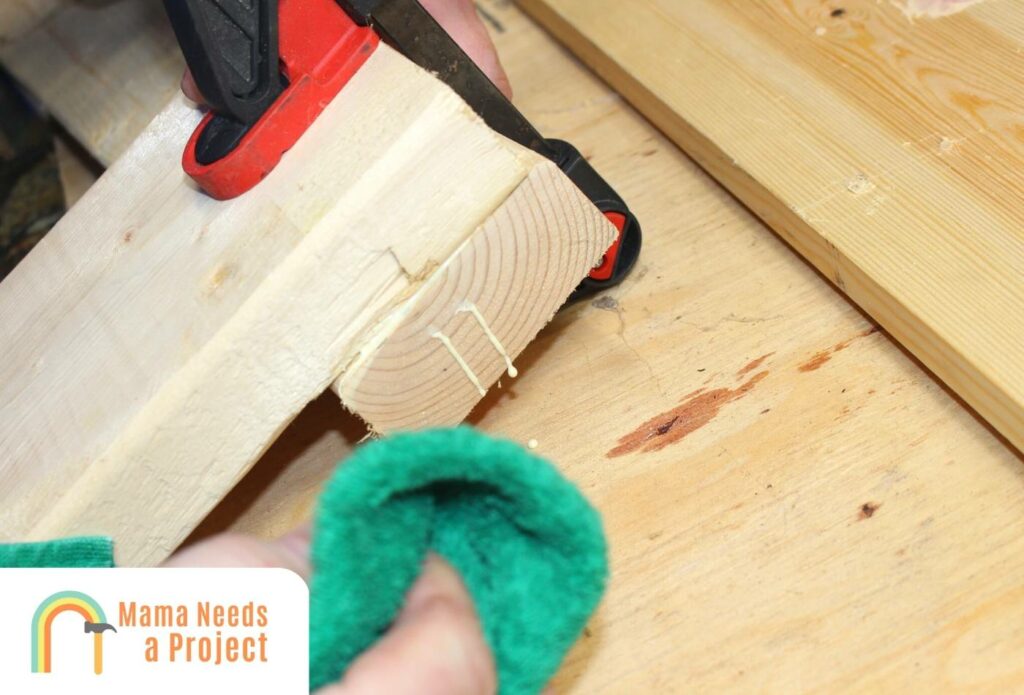
Sometimes, all it takes is a wet cloth to get rid of the dried glue.
If you don’t have much time on your hands, attempt this technique to remove the unwanted stains from the surface of your project.
Here’s how you can get rid of the dried glue with a wet cloth with water:
- Heat water to a near-boiling temperature
- Let the cloth soak inside the water for a few minutes, then wring out the excess
- Take the warm water cloth and scrub it over the dried glue with a firm pressure
- Repeat until the glue is gone from the wood
- Wipe with a dry cloth to get rid of excess wetness
- Let the wood dry before working with it again
At the very least, the hot water should soften the glue. From there, you can roll it off with your fingers or scrape the material away with a hard-edged item. Warm water is an excellent and easy method to try on your first attempt.
Take Advantage of Citrus Fruits
Salt combined with lemon or orange peels is a natural way to get rid of the stain, and it leaves the wood smelling delicious when all is said and done.
You can pick the fruit based on the one you prefer or which you have on hand when the time comes to remove the wood glue stain – just be sure that the fruit is very acidic as that’s why it is effective in removing wood glue.
Here’s how you can take advantage of citrus fruits to get rid of the stains:
- Cut the fruit in half
- Squeeze the lemon juice on the wood stain
- Let the acid sit for at least ten minutes
- Put a pinch of salt on the liquid and let it sit longer
- Utilize a spatula or credit card to scrape off the excess glue
You can also do the same by letting the orange and lemon peels rest on the stain for at least fifteen minutes.
Utilize Steel Wool
Steel wool is very similar to sandpaper in the way it works.
The material works to scrape off the stain from the surface of unfinished wood. You can find steel wool at any grocery store or hardware store in your area.
To utilize steel wool, you should:
- Invest in steel wool
- Rub off the wood glue
- Repeat if necessary
Don’t try steel wool on varnished or painted wood as this is one of the more abrasive ways to remove glue from wood.
Steel wool is a strong tool, so only utilize it if you are working with big stains. It’s an affordable option that comes in handy for various projects.
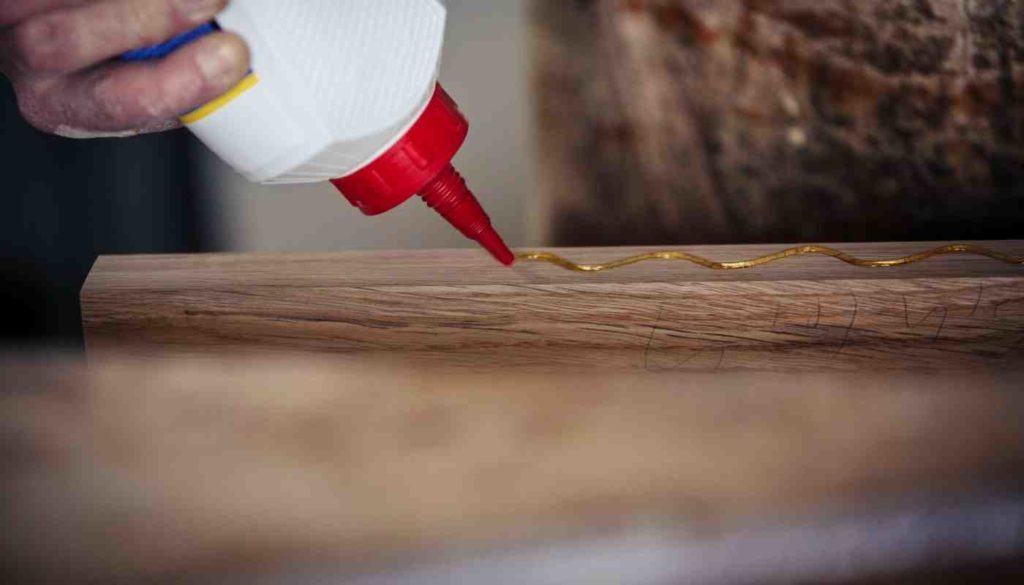
How Do You Remove Wet Glue?
What if the glue hasn’t dried yet? Is it possible to deal with the wet glue before it dries to prevent the hassle of scraping off dried glue in the first place? What should you do if wet glue falls on top of your wooden project?
As soon as wet glue spills, try to take care of it with a cloth.
At this stage, the wet glue will not leave a stain on your project. The longer you let it sit, the higher the risk that the glue stain will form underneath the project. Don’t hesitate with the glue in this state – take care of it as soon as possible for the best results.
Of course, the best preventative measure you can take is to avoid spilling any glue in the first place.
Measure out areas carefully and don’t apply more glue than is necessary for the project.
Care in the application process means less hassle later on in the drying portion of the construction.
What’s the Best Way to Remove Dried Wood Glue?
Although controversial to many, the best way to remove dried glue from unfinished wood is with sandpaper.
This statement is especially true if you have access to a sandpaper tool to speed up the process.
It gets the wood glue off the surface and removes it from the pores in the material. Sandpaper is affordable and effective, all at the same time.
Finished wood is a different story.
Try white vinegar or cooking oil to remove the glue in this case, as you want to avoid damage to the coloration of the wood. Any of the above-listed methods should provide a way to get efficiently rid of the dried glue.
Examine the materials you have, the wood you’re removing from, and the space you have to work within your home. There are many factors to consider based on the individual project when attempting to remove glue from wood.
Final Thoughts on Removing Dried Wood Glue from Wood
It can feel impossible to get dried glue off of wood, and it can ruin the look of a project.
Luckily, there are plenty of ways to remove wood glue from wood in an effective manner.
From steel wool to baking soda, most options involve materials you already have inside your home. It’s not tricky or costly to remove glue from your wooden masterpiece.
Experiment with different removal methods to find one that best suits you!

